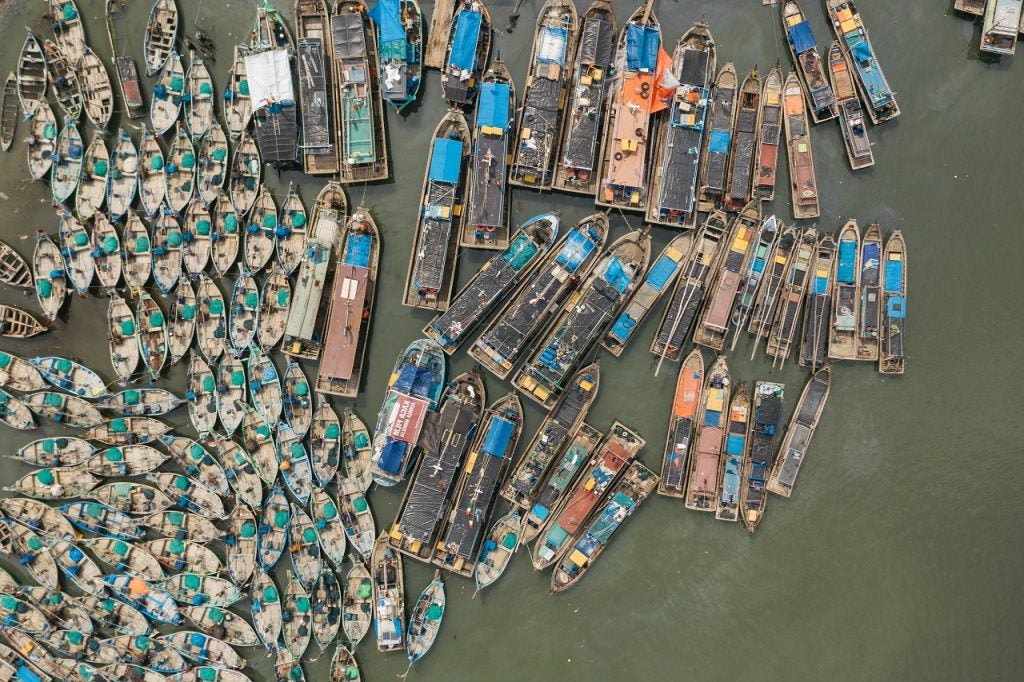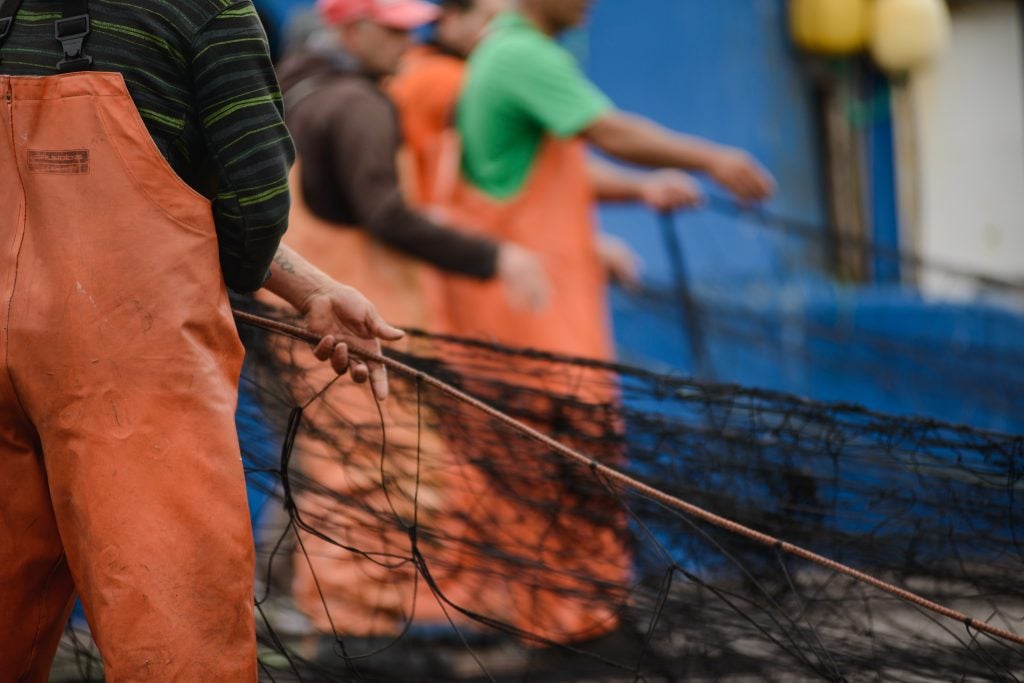By Julia Rose and Christopher Cusack
The generation of goods and services on or for the oceans has been growing exponentially in recent years. Industries such as shipping, marine tourism, aquaculture and renewable energy contribute to a “Blue Economy” that employed 2.3 million Americans and generated $373 billion for the U.S. economy in 2018.
Thanks to new and emerging technologies, fishermen have an important role to play in the development of the sustainable Blue Economy.
Better data: a fisher-collected resource
Information is the lifeblood of the Blue Economy: data drives the decisions made in all blue industries, and the better the data, the better the decisions. For example, if a shipping company has better information on waves and currents, they can plot better routes, saving time and money and reducing carbon emissions at the same time. If an aquaculture company has better data on the nutrients, water temperature, depth and currents in a particular area, they can better site the location of the farm to reduce operating costs and improve environmental performance. Another example lies in ocean thermal energy conversion, or OTEC, a renewable energy technology that produces energy by pumping warm surface water and cold deep-sea water through a power cycle. In order for OTEC to work properly, there needs to be a 36°F difference between the surface and the deep-sea water. Better data on these gradients could help pave the way for more renewable energy sources from the ocean.
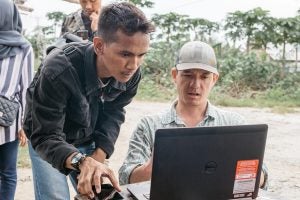 Yet, ocean data collection at a scale that would be useful is generally time-consuming and expensive. Instead of blue industries relying on their own data collection, why not turn to the people who venture out on the ocean every day? Fishermen already collect a lot of data — on currents, water temperature, pH levels, depth and more. Why not have them collect a bit more and make that available to industries that can benefit from it? In the OTEC example above, temperature gradients could be found by fishers. Surface temperature can easily be tracked with ocean thermometers, while deeper temperatures can be recorded with temperature sensors attached to fishing gear.
Yet, ocean data collection at a scale that would be useful is generally time-consuming and expensive. Instead of blue industries relying on their own data collection, why not turn to the people who venture out on the ocean every day? Fishermen already collect a lot of data — on currents, water temperature, pH levels, depth and more. Why not have them collect a bit more and make that available to industries that can benefit from it? In the OTEC example above, temperature gradients could be found by fishers. Surface temperature can easily be tracked with ocean thermometers, while deeper temperatures can be recorded with temperature sensors attached to fishing gear.
Collecting data in a digital world
New technologies are being developed that are decreasing the cost of data collection and making it easier to do. For example, the Moana Project in New Zealand is working to increase access to ocean information, and with their partner ZebraTech, have developed the Mangōpare sensor, which is a low-cost, easy-to-use temperature sensor. The Mangōpare sensor is simply attached to fishing gear, where it automatically collects data and sends it to a server. As devices such as this become simpler to use, less expensive and more readily available, it will become easier for fishers to play a major role in ocean data collection.
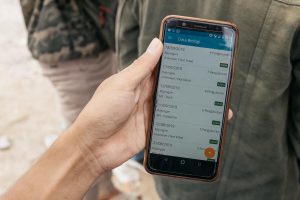 The widespread use of smartphones further simplifies data collection. With the press of a few buttons, fishers can submit reports on weather conditions, catch statistics, interactions with marine life and so much more. Apps that allow these observations to be recorded are becoming more and more prevalent. For example, the Skipper Science smartphone app is currently being used in Alaska as a way for fishers to record informal environmental observations. It ensures that these observations are incorporated into climate- and science-based decisions. There are also apps like Odaku, which record what species of fish were caught and locations where they were caught. Smartphone apps such as these make data collection easy and accessible: a game-changer for fisher-collected data.
The widespread use of smartphones further simplifies data collection. With the press of a few buttons, fishers can submit reports on weather conditions, catch statistics, interactions with marine life and so much more. Apps that allow these observations to be recorded are becoming more and more prevalent. For example, the Skipper Science smartphone app is currently being used in Alaska as a way for fishers to record informal environmental observations. It ensures that these observations are incorporated into climate- and science-based decisions. There are also apps like Odaku, which record what species of fish were caught and locations where they were caught. Smartphone apps such as these make data collection easy and accessible: a game-changer for fisher-collected data.
How data collection can benefit fishers
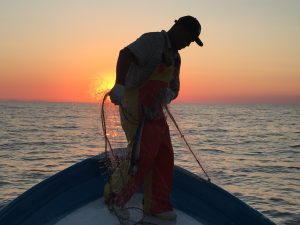 Currently, there are few incentives for fishers to collect data for other blue industries; mechanisms for transfer of value from data users (other blue industries) to data collectors (fishers) do not yet exist. But if there was more coordination between fishers and companies, ways to monetize data collection could be developed. This is where organizations like the Berring Data Collective come in. The Berring Data Collective’s main focus is working with fishers to fill gaps in ocean data, equipping fishing vessels with sensors and finding users for this data. Identifying and demonstrating the monetary value in data — value that will be created by other blue industries — is essential for ensuring that data collection is a profitable venture for fishers.
Currently, there are few incentives for fishers to collect data for other blue industries; mechanisms for transfer of value from data users (other blue industries) to data collectors (fishers) do not yet exist. But if there was more coordination between fishers and companies, ways to monetize data collection could be developed. This is where organizations like the Berring Data Collective come in. The Berring Data Collective’s main focus is working with fishers to fill gaps in ocean data, equipping fishing vessels with sensors and finding users for this data. Identifying and demonstrating the monetary value in data — value that will be created by other blue industries — is essential for ensuring that data collection is a profitable venture for fishers.
Bringing fishers into the Blue Economy
Few know the oceans quite like fishers do. They have a unique vantage point: working on the water daily, maintaining knowledge of shorelines and waters, and engaging with marine resources in detail. Who could be better poised to collect data for industries that center their revenue around the ocean? Thanks to new and emerging technologies, fishermen have an important role to play in the development of the sustainable Blue Economy.










